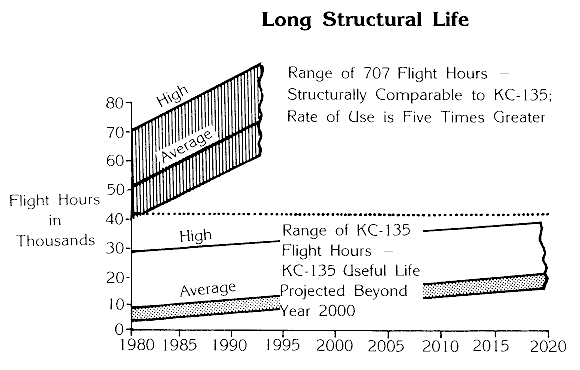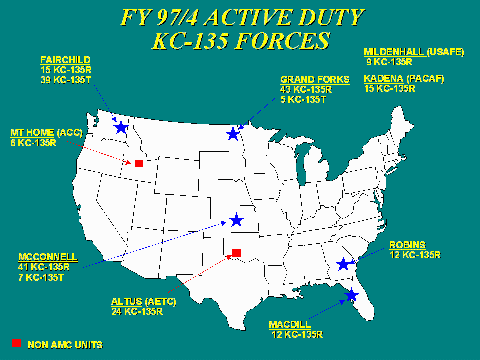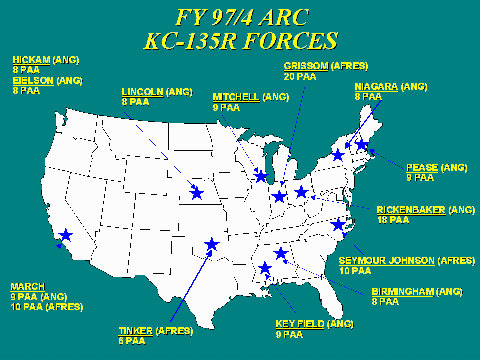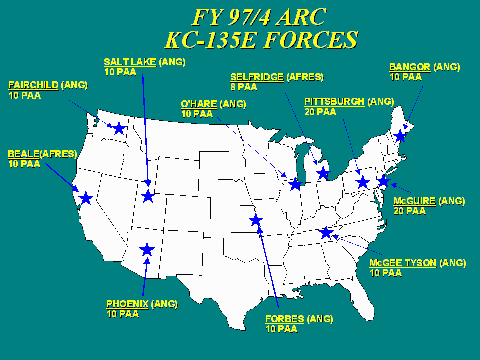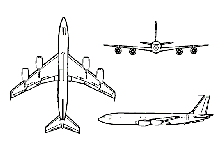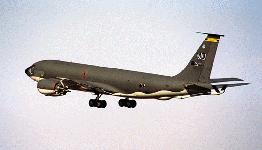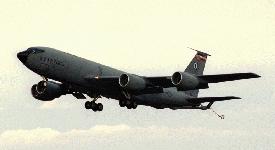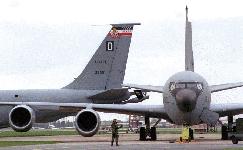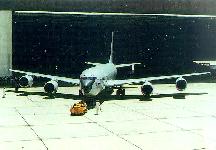| Specifications |
| Primary Function: | Aerial refueling |
| Contractor: | Boeing Military Airplanes |
| Power Plant: | Four CFM-International F108-CF-100 turbofans |
| Thrust: | 22,224 pounds (10,000.8 kilograms) each engine |
| Length: | 136 feet, 3 inches (40.8 meters) |
| Height: | 38 feet, 4 inches (11.5 meters) |
| Wingspan: | 130 feet, 10 inches (39.2 meters) |
| Speed: | Maximum speed at 30,000 feet (9,100 meters) 610 mph (Mach 0.93) |
| Ceiling: | 50,000 feet (15,152 meters) |
| Weight: | 119,231 pounds (53,654 kilograms) empty |
| Maximum Takeoff Weight: | 322,500 pounds (145,125 kilograms) |
| Range: | 11,192 miles (9,732 nautical miles) with 120,000 pounds (54,000 kilograms) of transfer fuel. |
| Crew: | Four or five; up to 80 passengers. |
| Date Deployed: | August 1965. |
| Unit Cost: | KC-135R, $53 million; KC-135E, $30.6 million; KC-135A, $26.1 million. |
| Inventory: | Active force, 457; Reserve, 30; ANG, 158. |
